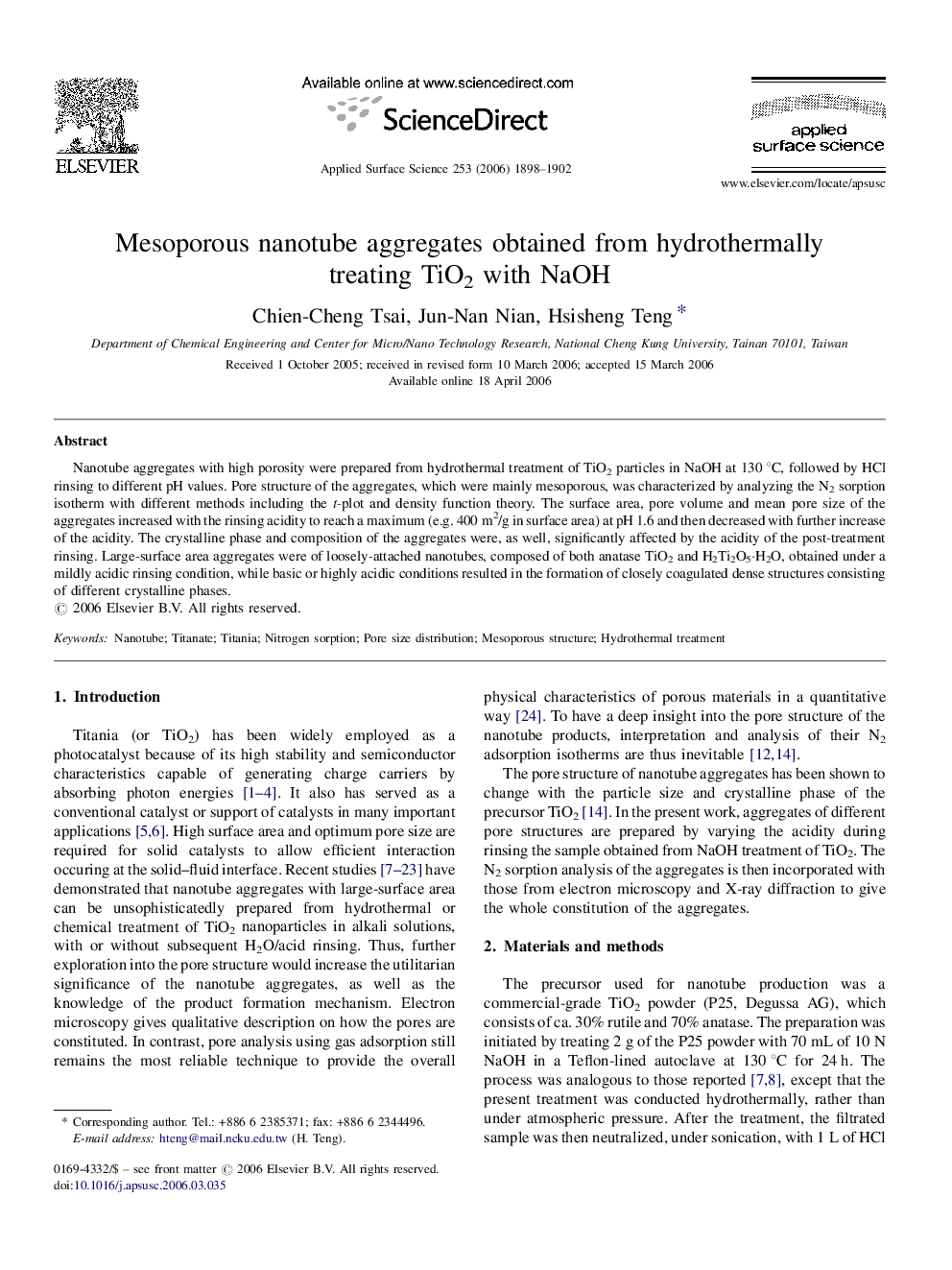| Article ID | Journal | Published Year | Pages | File Type |
|---|---|---|---|---|
| 5370035 | Applied Surface Science | 2006 | 5 Pages |
Nanotube aggregates with high porosity were prepared from hydrothermal treatment of TiO2 particles in NaOH at 130 °C, followed by HCl rinsing to different pH values. Pore structure of the aggregates, which were mainly mesoporous, was characterized by analyzing the N2 sorption isotherm with different methods including the t-plot and density function theory. The surface area, pore volume and mean pore size of the aggregates increased with the rinsing acidity to reach a maximum (e.g. 400 m2/g in surface area) at pH 1.6 and then decreased with further increase of the acidity. The crystalline phase and composition of the aggregates were, as well, significantly affected by the acidity of the post-treatment rinsing. Large-surface area aggregates were of loosely-attached nanotubes, composed of both anatase TiO2 and H2Ti2O5·H2O, obtained under a mildly acidic rinsing condition, while basic or highly acidic conditions resulted in the formation of closely coagulated dense structures consisting of different crystalline phases.
